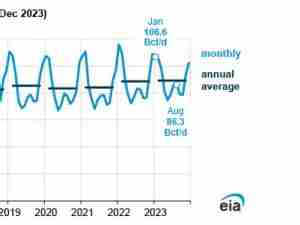Norway is gearing up to limit power exports, an early sign of the tests Europe’s cross-border solidarity will face this winter as the energy crunch deepens.
Refilling dams will be prioritized over power production when levels fall below seasonal averages, Petroleum and Energy Minister Terje Aasland said in a statement on Monday. The country is one of Europe’s top exporters of electricity, sending about a fifth of its production to its neighbors but low water levels in southern Norway mean the government says it needs to act now to prevent domestic shortages this winter.
“In practice, this will involve control mechanisms that limit the possibility of export in the event of low reservoir filling,” the minister said in the text of a briefing for parliamentary party leaders. The ministry will this week work to lay the framework so that the mechanism can be put in place as quickly as possible, he said.
As Europe’s energy crisis worsens, any restriction would be yet another blow for Germany, the UK and the Netherlands who rely on cheap Norwegian hydropower to help keep the lights on.
Aasland and Prime Minister Jonas Gahr Store met with parliamentary leaders on Monday morning to brief them on the power market situation and parliament may be called back from its summer break to address the issue. The energy minister also confirmed that an increase to a program to help consumers and farmers cover soaring power costs will be brought forward a month to Sept. 1.
Norway isn’t an EU member, but is part of Europe’s single energy market and its rules state that countries aren’t allowed to curb flows to neighbors for prolonged periods. Cuts would only be allowed if an emergency situation is declared. And the lobby group for the nation’s utilities said any potential curbs to Norwegian electricity exports need to follow European Union power-market rules.
“If there is something that we do not need in a difficult time it is to undermine the cooperation and the predictability of power trade and flow that the European energy transition depends on, or Norway’s commitment to that cooperation and rules of exchange,” Toini Lovseth, executive director of markets and customers at industry group EnergiNorge, said by email before the minister’s statement.
Norway gets almost all of its electricity from its vast hydro resources. Historically, it has been able to export a hefty surplus and still have among the lowest prices in Europe. But after a dry spring, hydro reservoirs in the worst impacted area stand at 49.3%, compared with a median of 74.9% for the 2000-19 period.
Norway now has more water in the reservoirs than the authorities’ earlier forecasts indicated for the beginning of autumn, Aasland said. The probability of needing electricity rationing in the winter is “low,” he added, citing forecasts from regulator NVE.
Utilities benefit from selling electricity abroad, especially when prices are as high and volatile as they are now. The nation’s biggest power producer, Statkraft AS, supports “a well-functioning market system for power where Norway can import power in dry years and export power when we have a power surplus,” it said by email, declining to comment further on any potential curbs.






